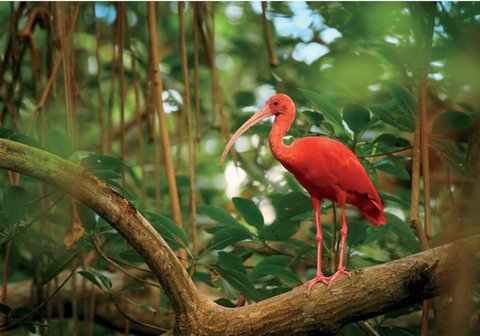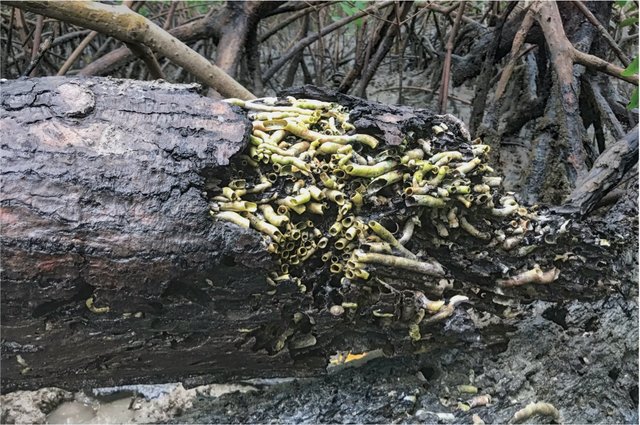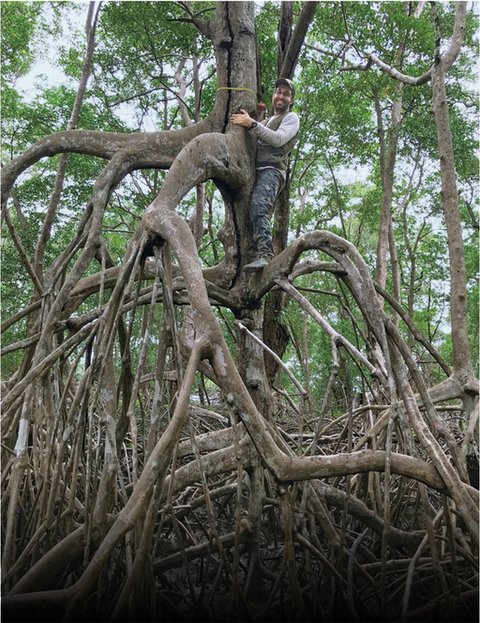North
America
South
America
Pacific
Ocean
Brazil
Iworkinaplacewherethelandandoceanmeet.Itisamangroveforest.Mangrovesareagroupoftrees.Theygrowfroma tangleofrootsdeepinthemud.Thesewetlandsaretough.Theycanthriveinsaltyoceanwater.Theycanalsowithstand storms.
WelcometoBrazil
ThelongestcontinuousmangroveforestsintheworldareonthecoastofBrazil.TreesherecanstoretwiceasmuchcarboninthesoilasthenearbyAmazon rainforest.

A scarletibisfindsahomeinthe mangrove.

Shipwormsnibbleawayatdead wood.
Mangrovesarefilledwithlife.Crabs,fishes,birds,andinsectsfindfoodandhomeshere.Thebeautifulscarletibisisjustonemangrove bird.
Shipwormskeepmangroveshealthy.Theyeatdeadwood.Forpeoplewholivehere,thewetlandsareimportantforfisheriesand timber.
ThePowerofMangroves
Mangrovesprotectusfromnaturalhazards.Theyformalivingbarrierthatsheltersusfromstorms.Theylessentheeffectofwavesandhighwinds.Theyalsotrap carbon.
Thedenserootsofmangroveshelptobuildsoil.Therootsabovethegroundreduceerosion.Wemustlearntoprotectmangrovesbecausetheyprotect us.

Iclimbedintotherootsofthistreetogetabetterlookatthewhole swamp.